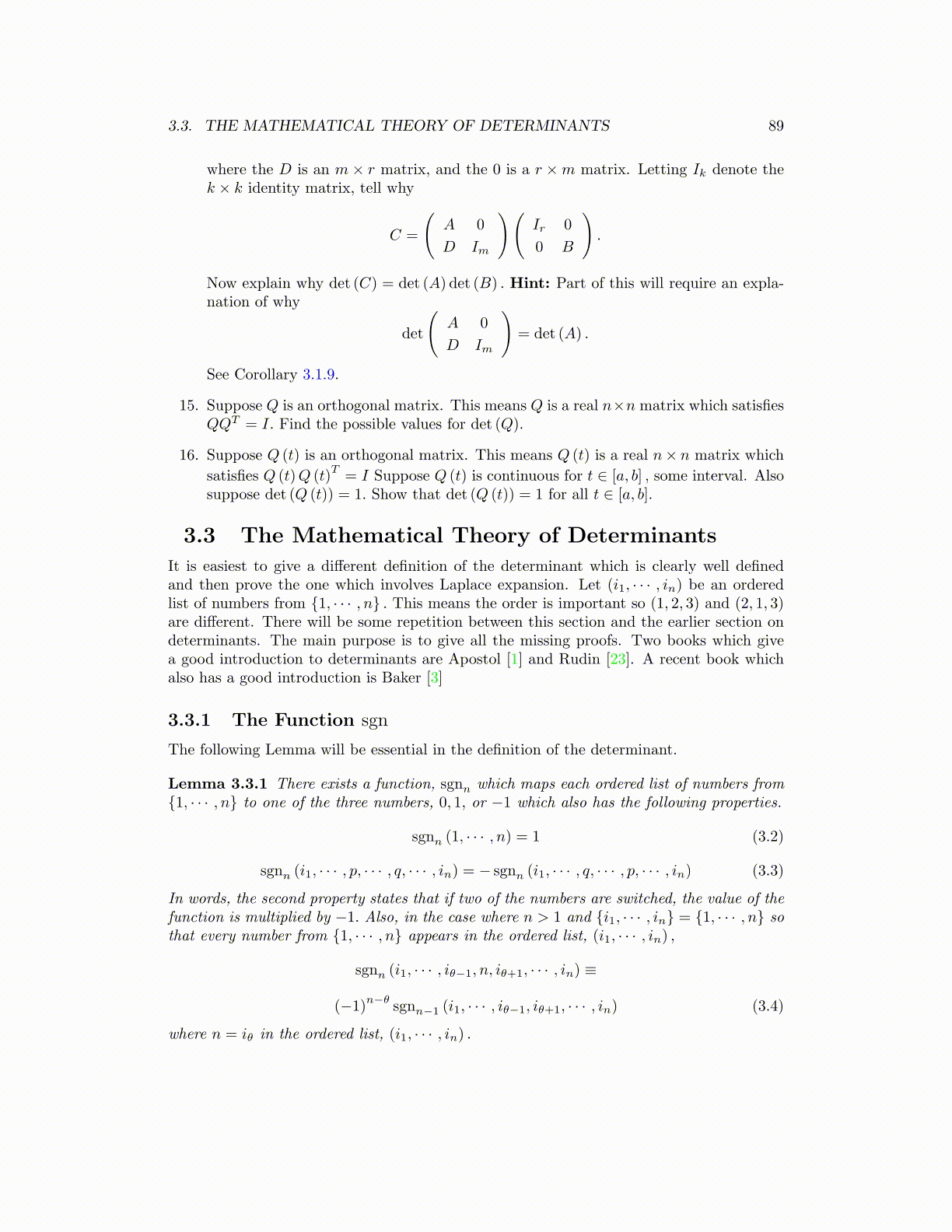
3.3. THE MATHEMATICAL THEORY OF DETERMINANTS 89
where the D is an m× r matrix, and the 0 is a r ×m matrix. Letting Ik denote thek × k identity matrix, tell why
C =
(A 0
D Im
)(Ir 0
0 B
).
Now explain why det (C) = det (A) det (B) . Hint: Part of this will require an expla-nation of why
det
(A 0
D Im
)= det (A) .
See Corollary 3.1.9.
15. Suppose Q is an orthogonal matrix. This means Q is a real n×n matrix which satisfiesQQT = I. Find the possible values for det (Q).
16. Suppose Q (t) is an orthogonal matrix. This means Q (t) is a real n× n matrix which
satisfies Q (t)Q (t)T= I Suppose Q (t) is continuous for t ∈ [a, b] , some interval. Also
suppose det (Q (t)) = 1. Show that det (Q (t)) = 1 for all t ∈ [a, b].
3.3 The Mathematical Theory of Determinants
It is easiest to give a different definition of the determinant which is clearly well definedand then prove the one which involves Laplace expansion. Let (i1, · · · , in) be an orderedlist of numbers from {1, · · · , n} . This means the order is important so (1, 2, 3) and (2, 1, 3)are different. There will be some repetition between this section and the earlier section ondeterminants. The main purpose is to give all the missing proofs. Two books which givea good introduction to determinants are Apostol [1] and Rudin [23]. A recent book whichalso has a good introduction is Baker [3]
3.3.1 The Function sgn
The following Lemma will be essential in the definition of the determinant.
Lemma 3.3.1 There exists a function, sgnn which maps each ordered list of numbers from{1, · · · , n} to one of the three numbers, 0, 1, or −1 which also has the following properties.
sgnn (1, · · · , n) = 1 (3.2)
sgnn (i1, · · · , p, · · · , q, · · · , in) = − sgnn (i1, · · · , q, · · · , p, · · · , in) (3.3)
In words, the second property states that if two of the numbers are switched, the value of thefunction is multiplied by −1. Also, in the case where n > 1 and {i1, · · · , in} = {1, · · · , n} sothat every number from {1, · · · , n} appears in the ordered list, (i1, · · · , in) ,
sgnn (i1, · · · , iθ−1, n, iθ+1, · · · , in) ≡
(−1)n−θ
sgnn−1 (i1, · · · , iθ−1, iθ+1, · · · , in) (3.4)
where n = iθ in the ordered list, (i1, · · · , in) .